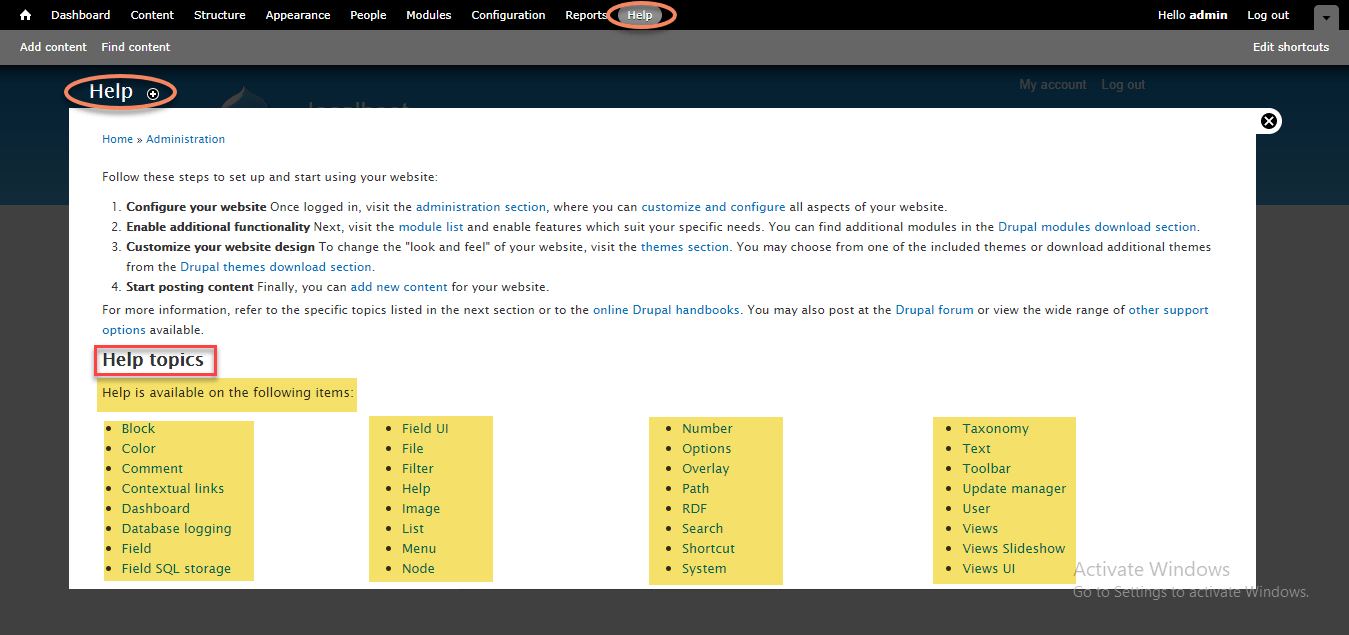Drupal 8 admin panel basics
By Admin
Jul 26, 2018
There are many blogging website are running on internet which are used for ” content management system” (CMS)
For example: “WordPress“, “Drupal“. Both of these good in their work of scenarios.
Here we are going to talk about Drupal. “Drupal” is a free open source “content management system“.
Which is supported by a very large community. you can do everything whatever you have done in other CMS.
With the help of drupal you have posses control on your content easily because it has some essential features that manages control on content of drupal web application.
If you are going to develop drupal 8 websites then you must know some important features of drupal web programming.
Drupal interface has a main menu :
1- Dashboard
2- Content
3- Structure
4- Appearance
5- People
6- Modules
7- Configuration
8- Reports
9- Help
1 – Dashboard
=> Dashboard contains recent content
=> You can perform “EDIT” and “DELETE” operations on your recent content
=> You can customized your dashboard with the help of “customized dashboard” option
=> At the right side of dashboard a search form is available where you can easily search your content
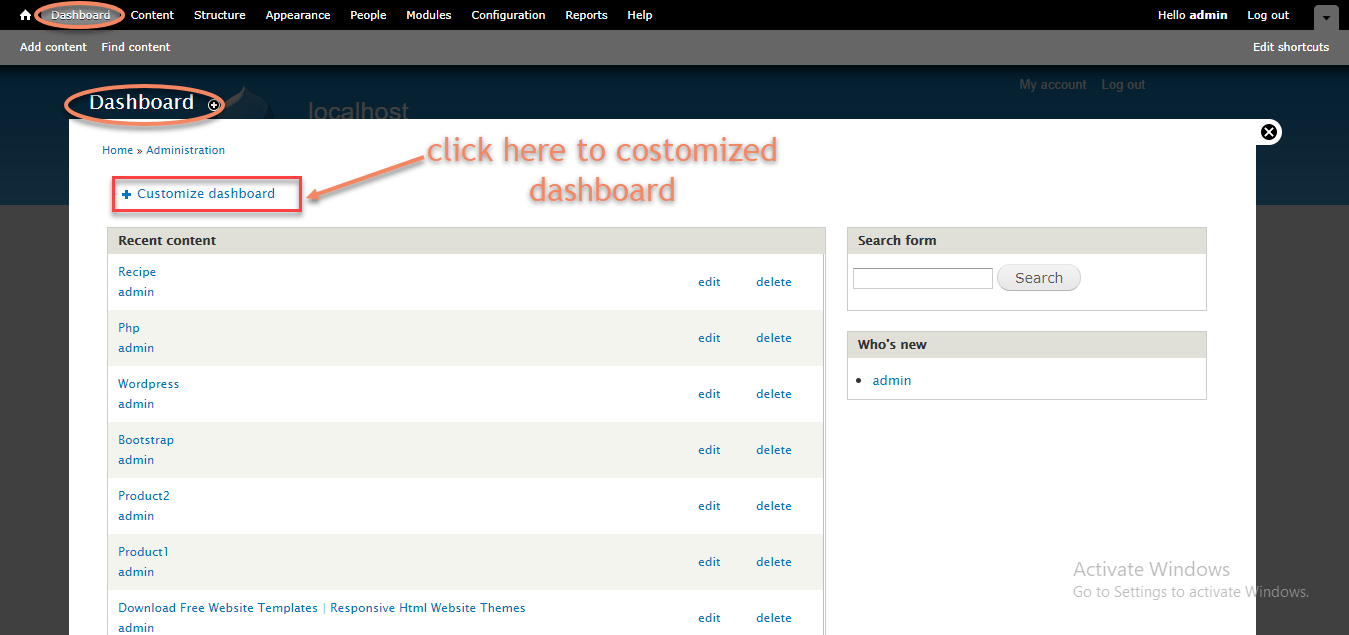
2 – Content
=> Content menu contains content of different types
For Example: Article, template ( custom post type ) , pages, product ( custom post type )
=> You can add a new content, perform many opertions and published them
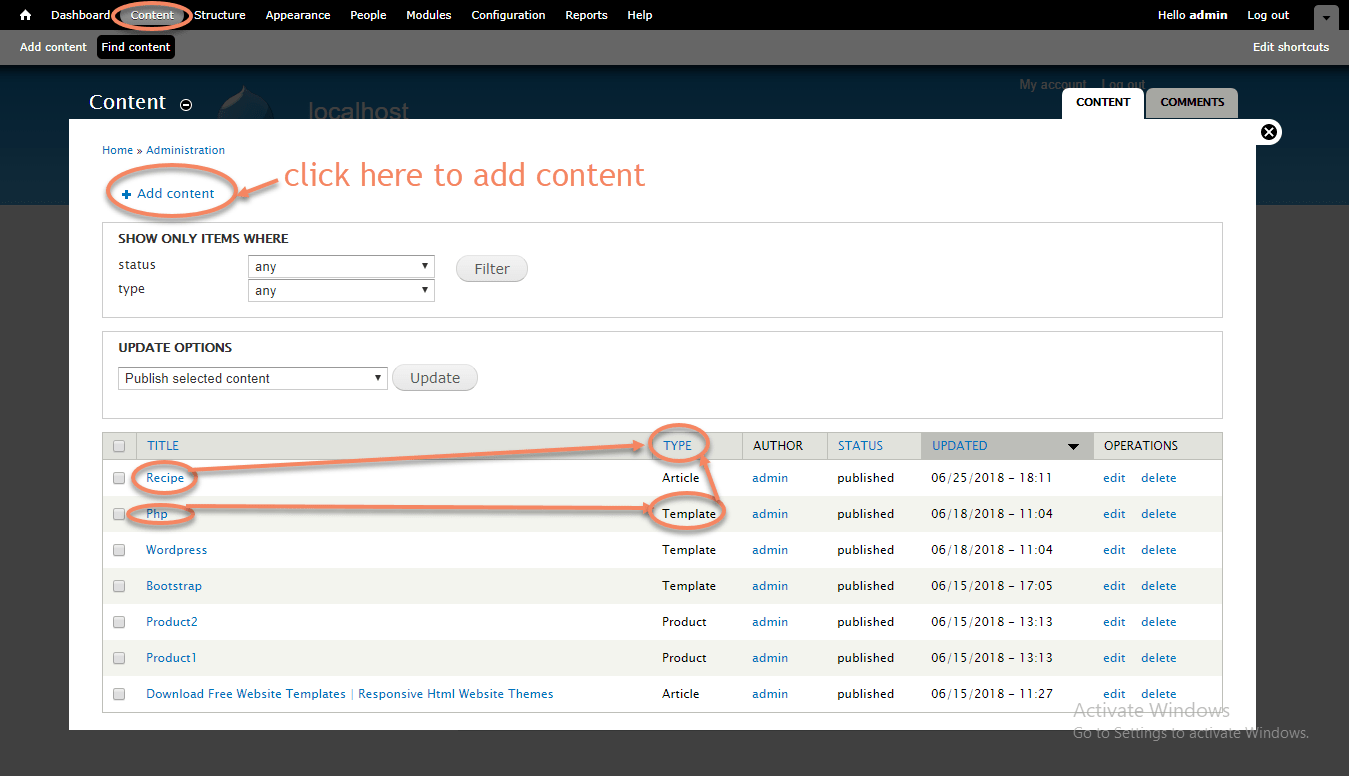
3 – Structure
Structure menu contains many elements
(1) Blocks
(2) Bulk Exporter
(3) Content Types
(4) Custom Access Rulesets
(5) Custom Content Panes
(6) Menus
(7) Pages
(8) Stylizer
(9) Taxonomy
(10) Views
(3.1) Blocks :
This page are used for creating blocks. This page provides a drag-and-drop interface for assigning a block to a region. You can control the order of blocks within the regions. Blocks are generally positioned on a per-theme basis. Manage specific title, visibility settings for each blocks by just click on configure link.
click save blocks to save block.
(3.2) Bulk Exporter :
Bulk exporter provides a View_view. Bulk exporter page, provides facility to export code on the basis of module name.
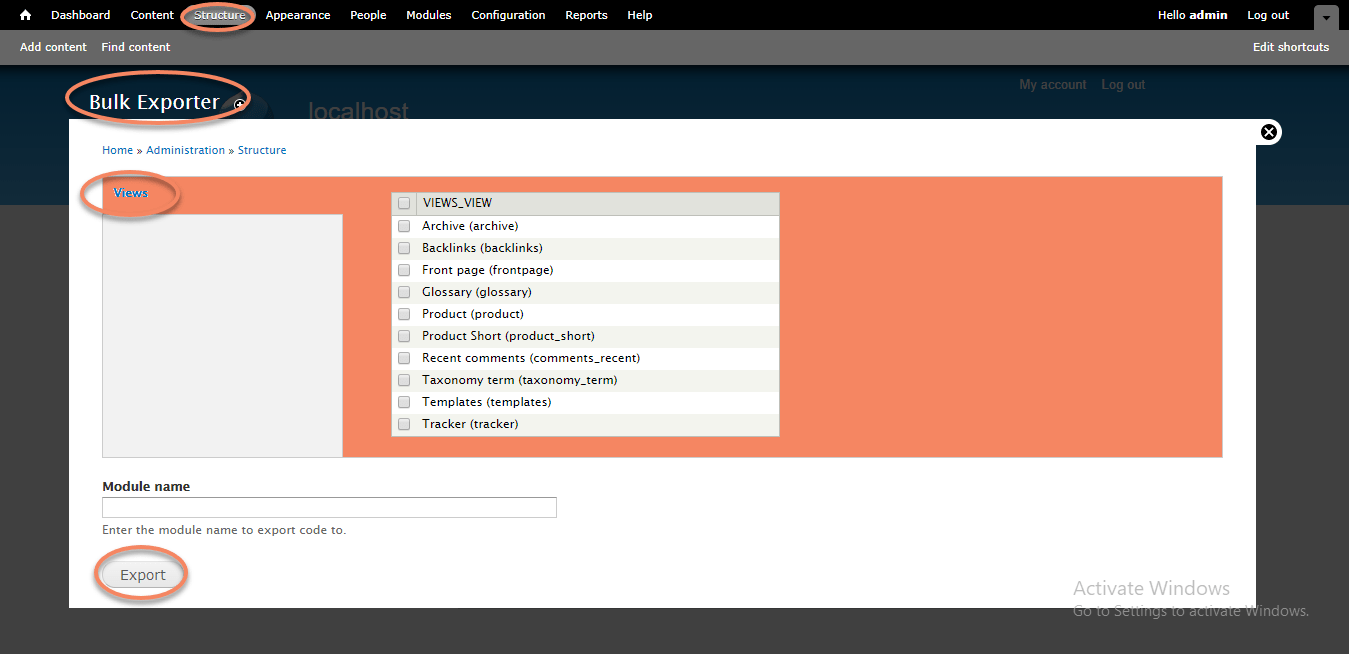
(3.3) Content types :
Content types page provides user to add content of different types.
Example: Article ( type ), Page ( type ), Product ( type ), Recipe ( type ), Template ( type ).
you can perform many operations with content types.
(a) edit (b) manage fields (c) manage display (d) delete.
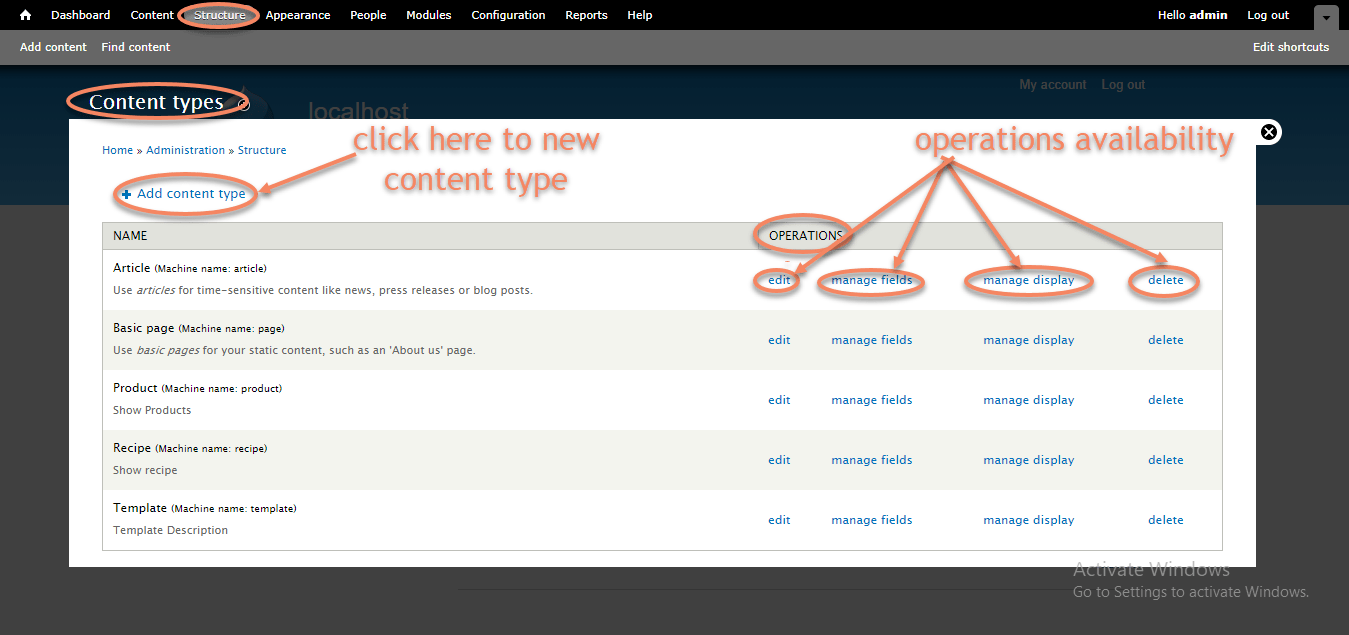
By default drupal provides several fields to content types but you can add your custom fields to a specific content types.
By default drupal provides fields are: Title, Tags, Body, Image.
Drupal user can manage display content items by using different view modes.
If you want to wish a delete content types, then you can delete a custom types by clicking to delete link.
(3.4) Custom Access Rulesets :
This page provides custom access rulests to display. you can add or import custom access rulesets.
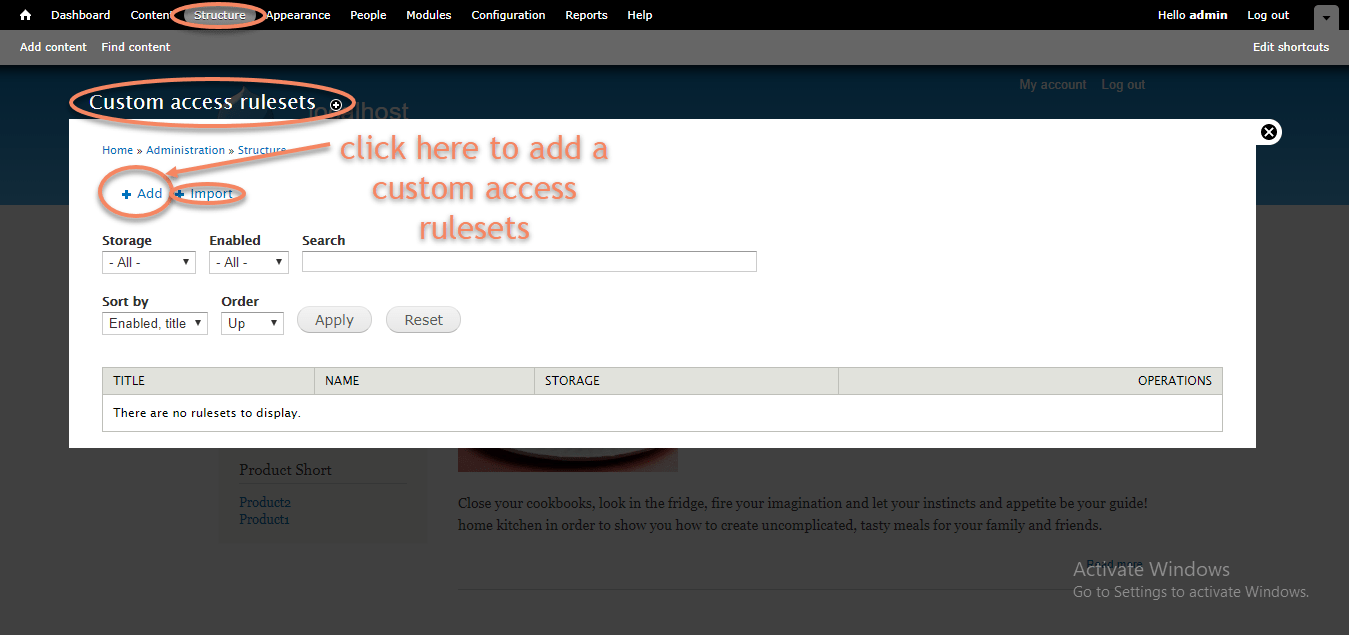
(3.5) Custom Content Panes :
This page provides custom content panes to display. you can add or import custom content panes.
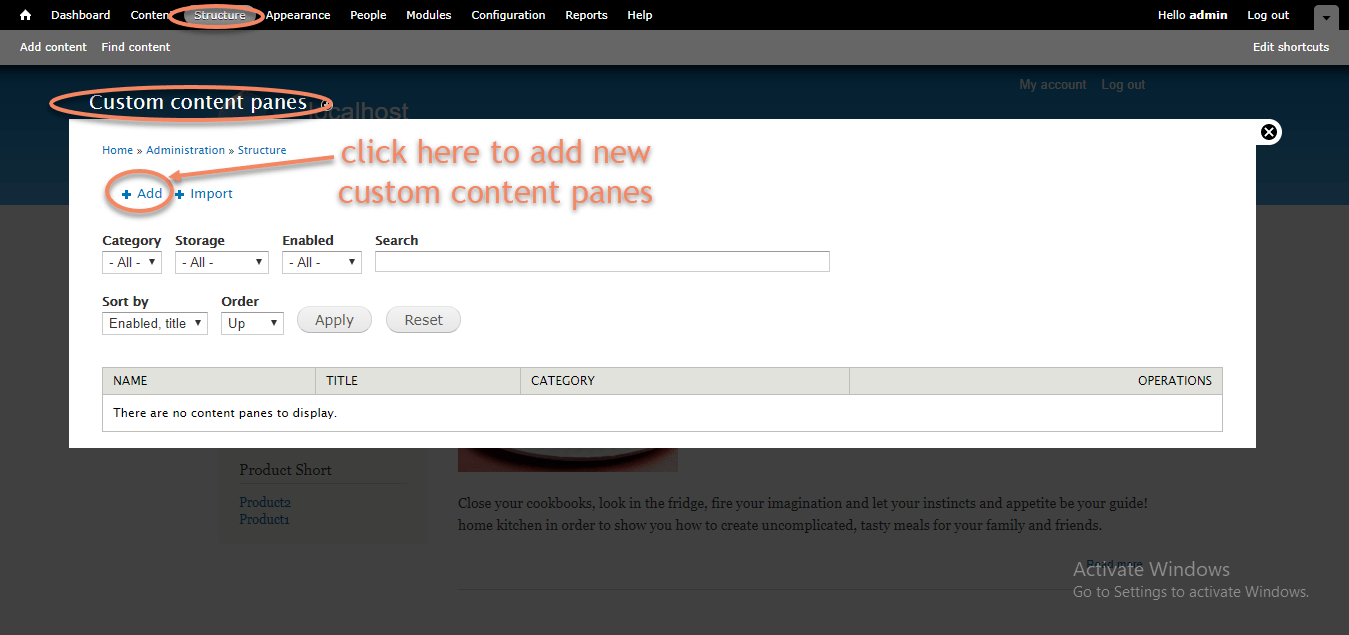
(3.6) Menus :
Menus page provides menus functionality. you can add new menus by clicked to add menu. manage operation to menus. operations: list link, edit menu, add link.
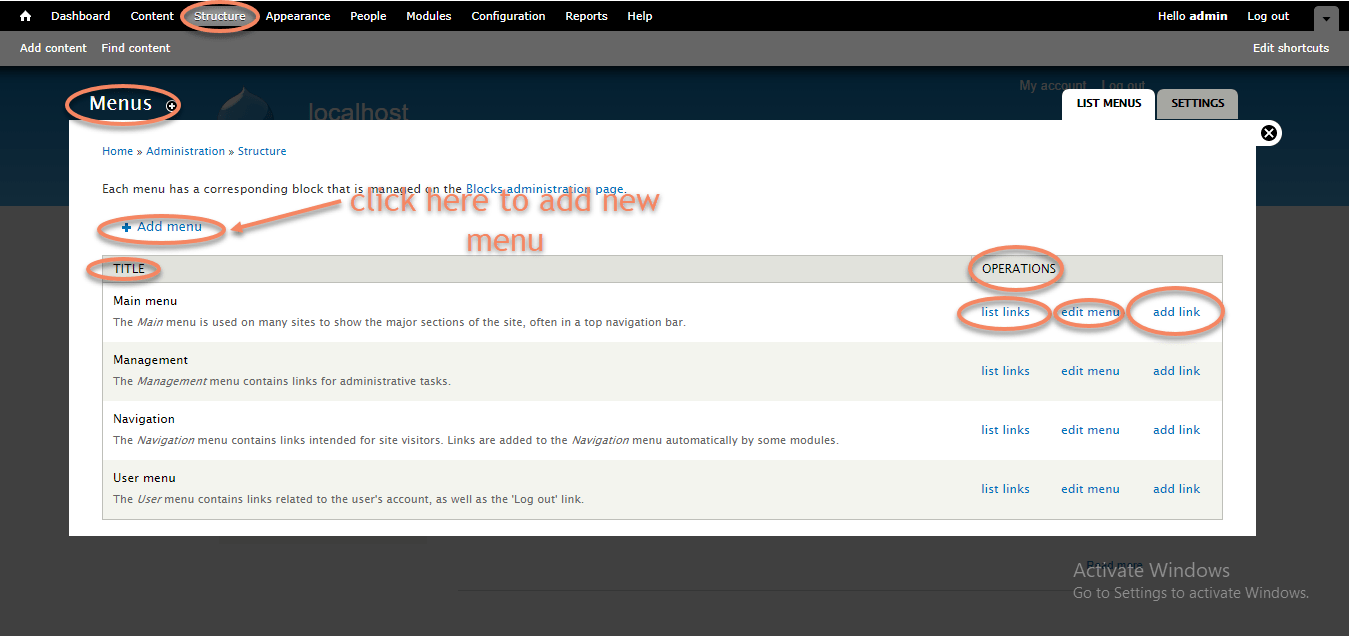
(3.7) Pages :
Pages page gives user to add custom page or import page option. This page comes with several operations features, you can enable or edit a page.
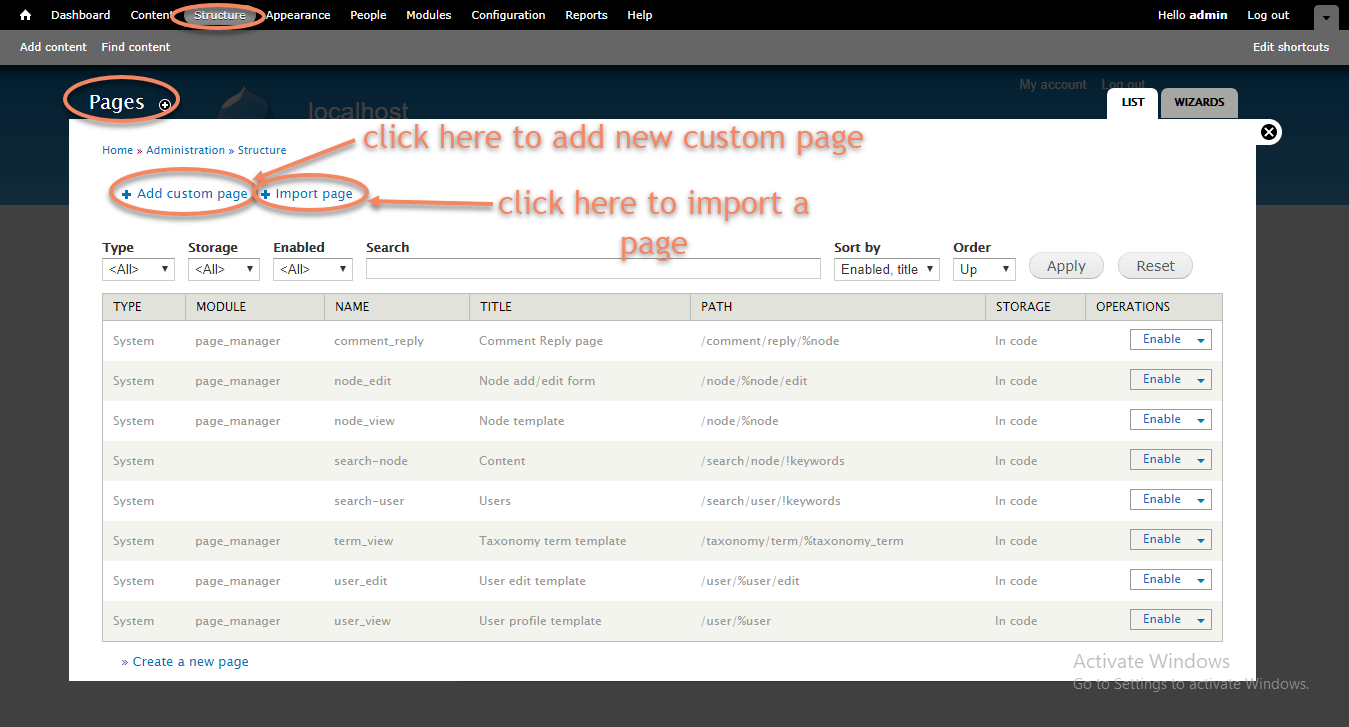
(3.8) Stylizer :
This page provides styles to display. User should enable a module that utilizes them. User can import stylizer to display style.
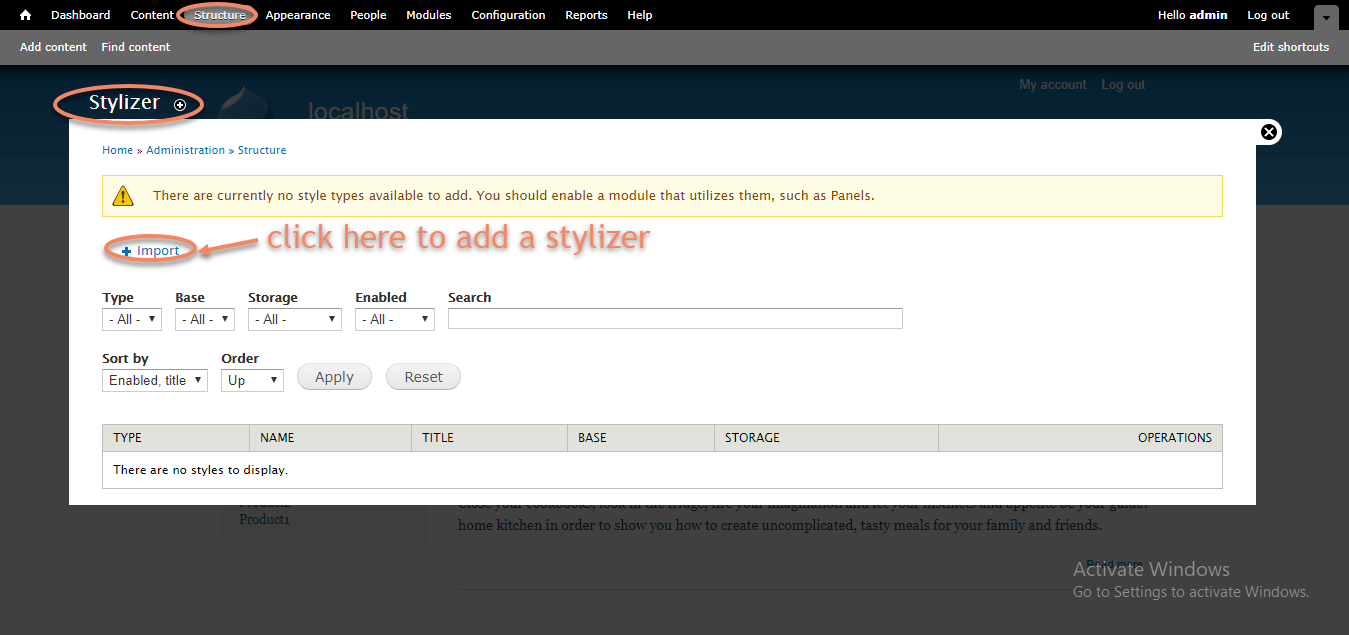
(3.9)Taxonomy :
Taxonomy is for categorizing content. Terms are generally grouped into vacabularies. for example: a vocabulary called “Cars” would contain the terms ” Maruti800 ” and ” Hyundai i10 ”
you can add vocabulary ( categories )by clicking add vocabulary. This page has many operations: edit vocabulary, list terms, add terms.
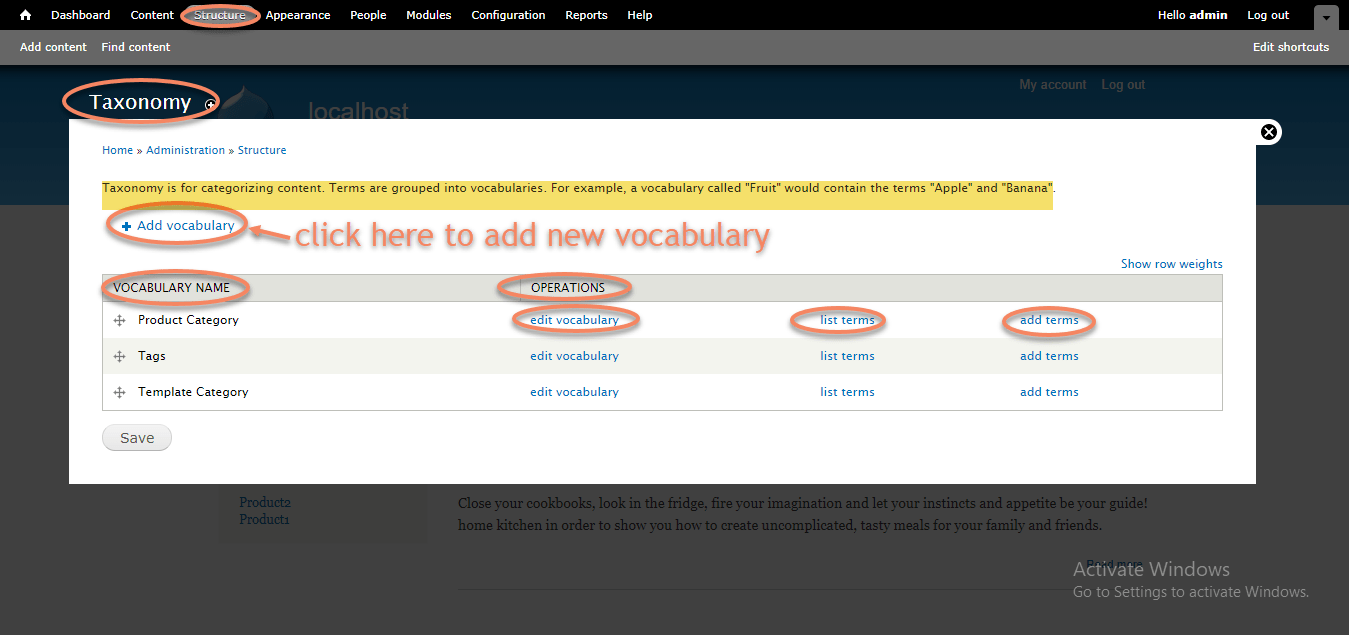
(3.10) Views :
Views page provides you to create views. you can add view from template or import another view which has already created.
views has several operations example : edit , disable , delete, clone, export.
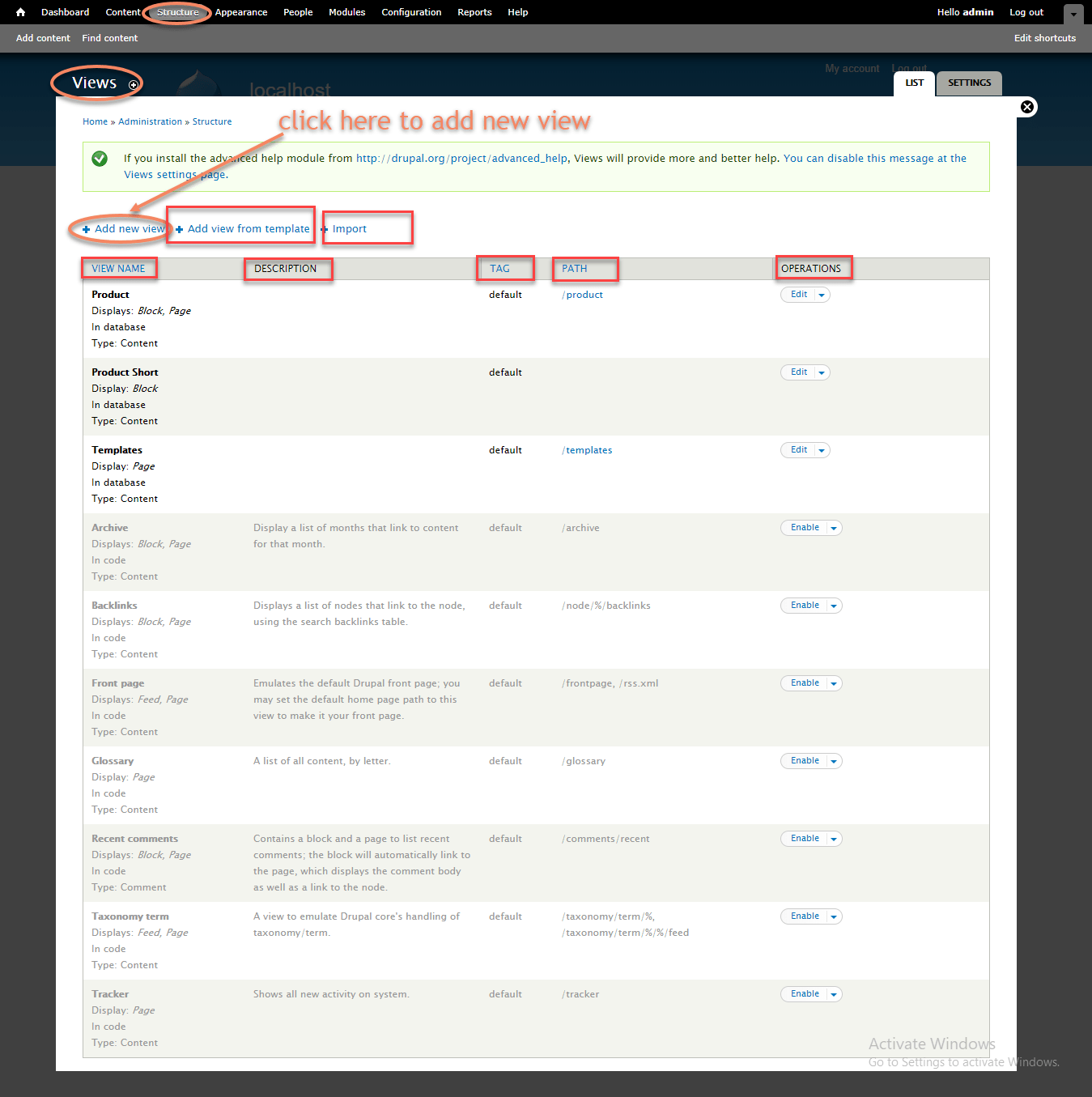
(4) Appearance :
This page contains default themes of drupal. Provides enabled theme information , from here you can install new themes as well.
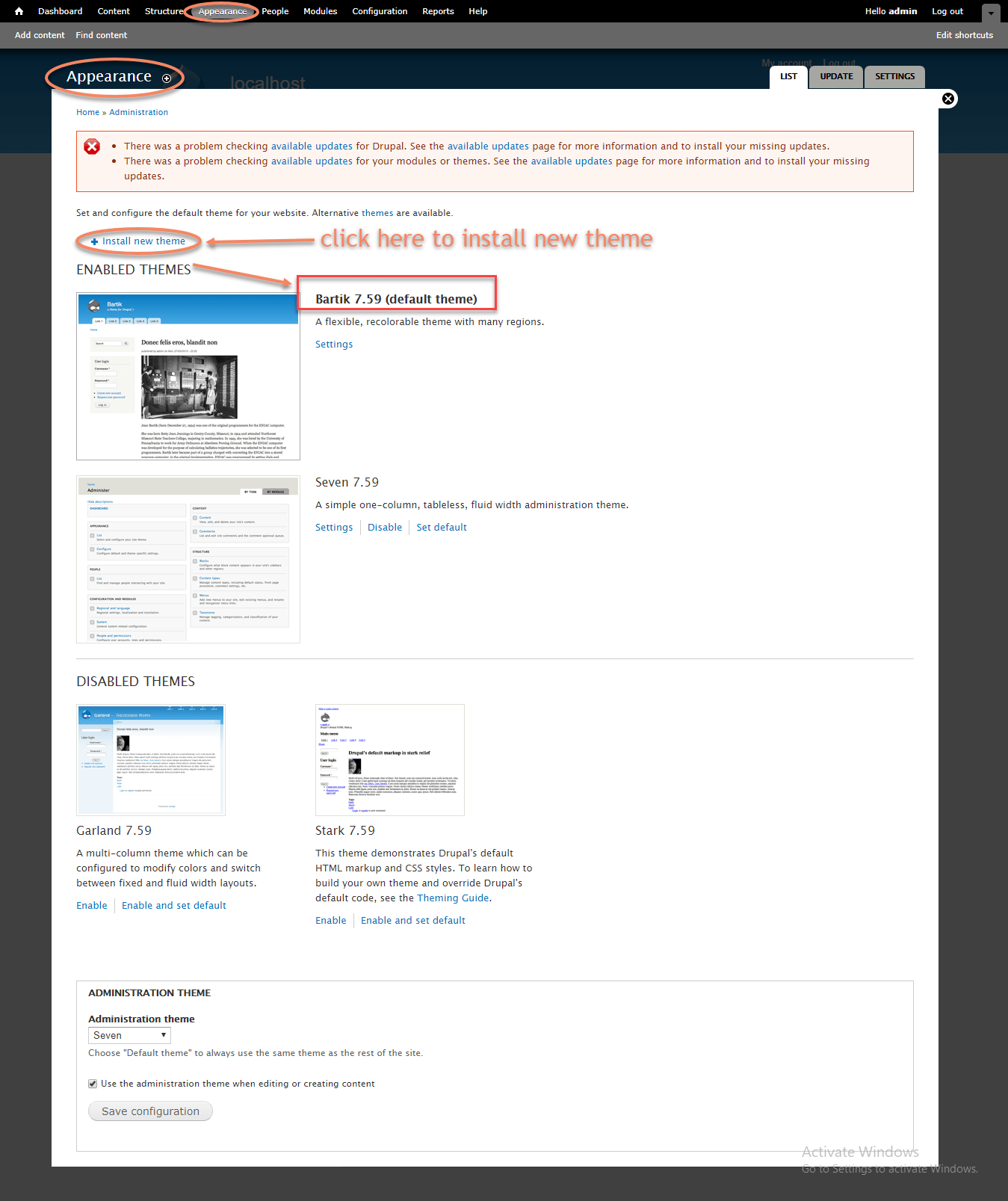
(5) People :
This page provides user access previliges on the basis of role, permissions, status. Add user link to add new user.
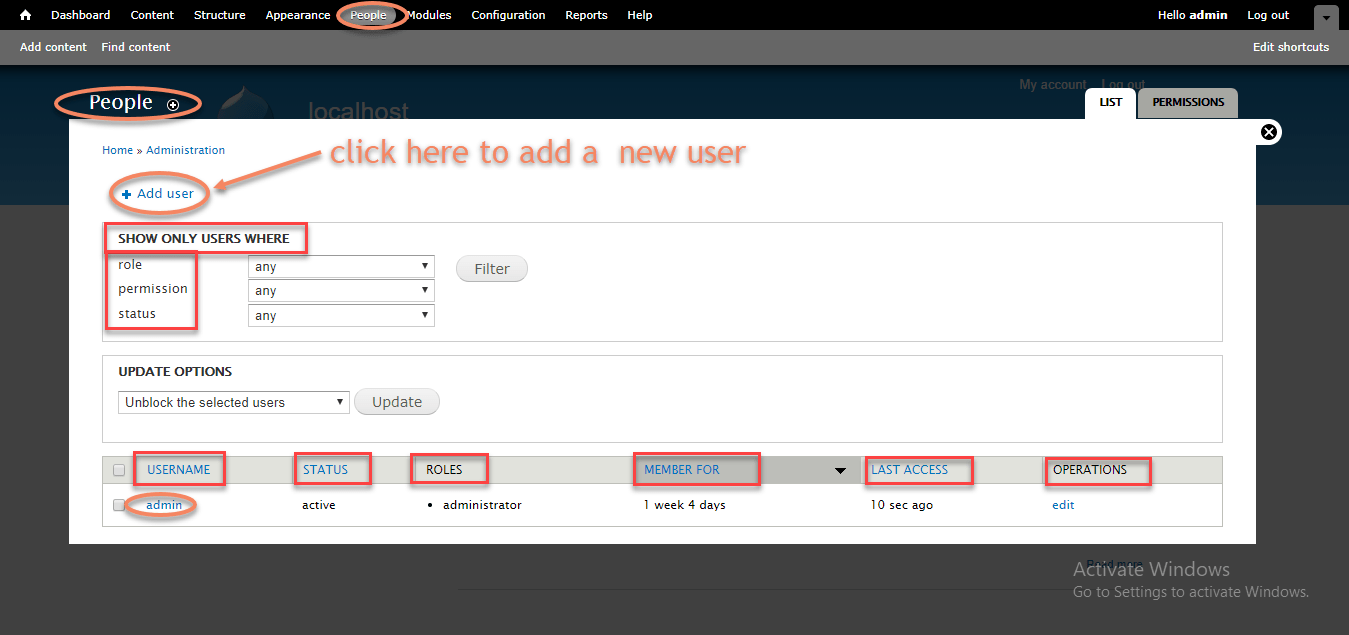
(6) Modules :
This page provides modules specific information( ex: module name). you can install new module from this page. Several operations are available for specific module.

(7) Configuration :
This page contains the configuration information.
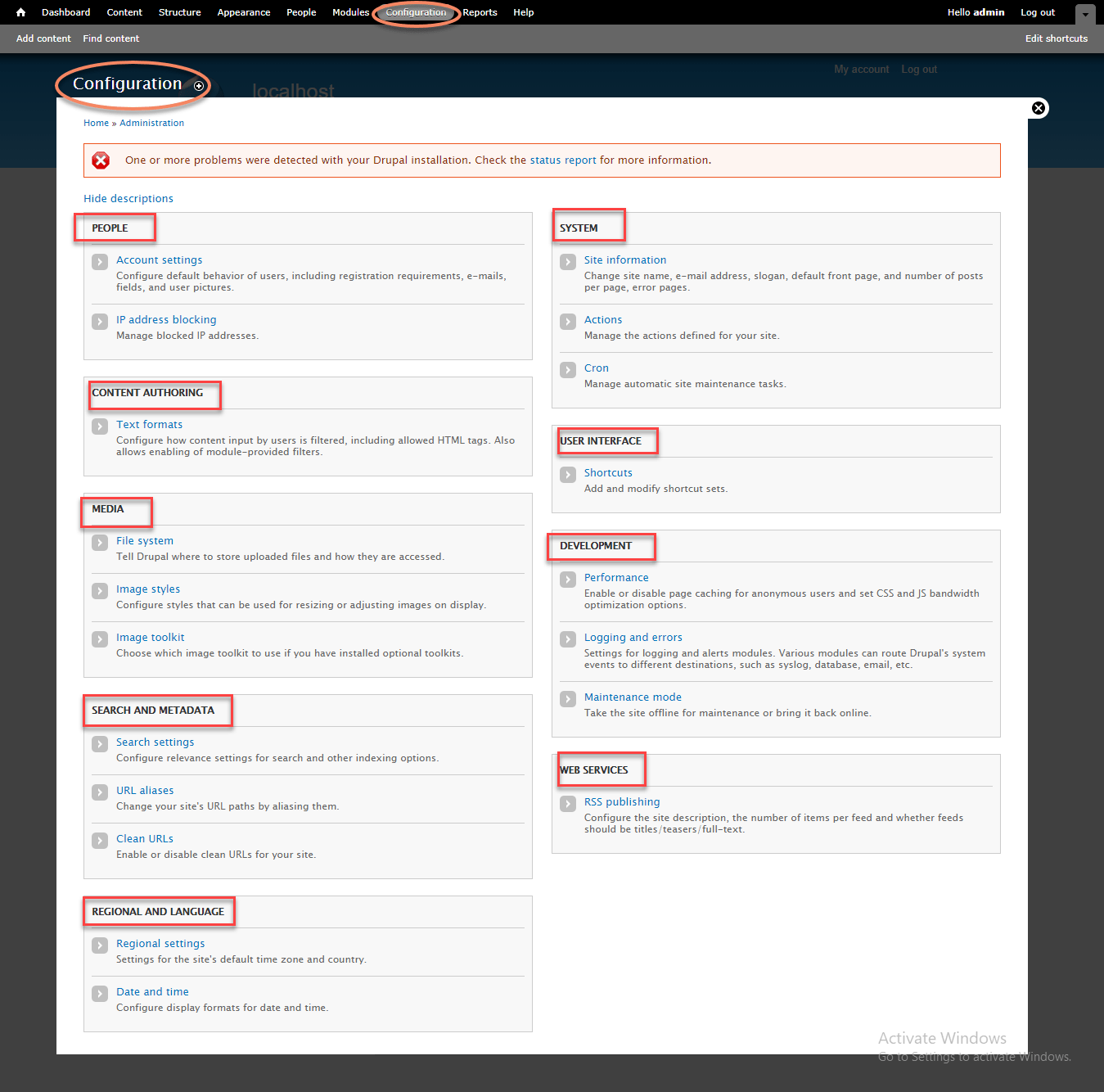
(8) Reports :
This page provides status reports updates information.
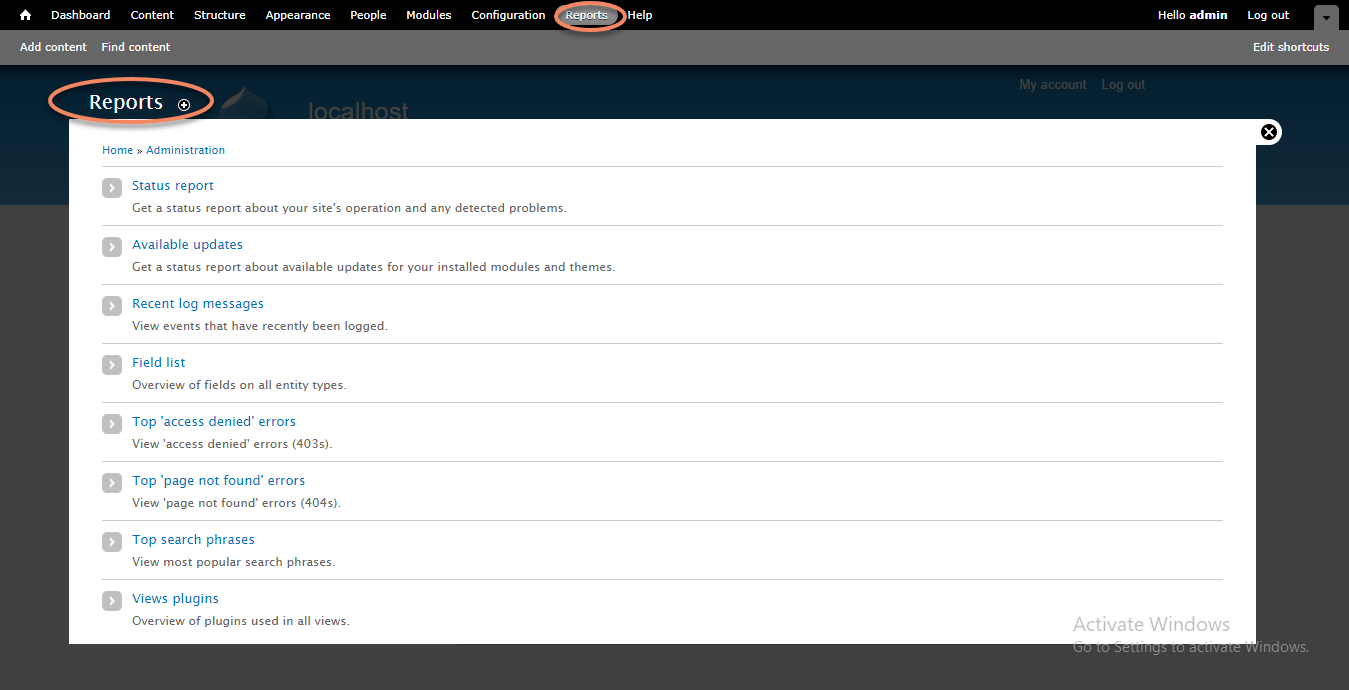
(9) Help :
Help page provides help topics for different items of themes.
